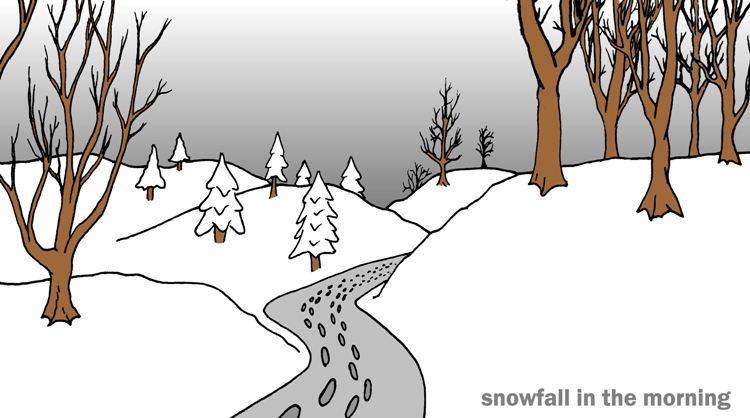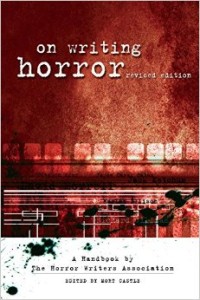Last week, Flashes in the Dark reprinted my story, “Snowfall in the Morning,” a dark fantasy tale that originally appeared in Thirteen Myna Birds this past winter. This was among my first pieces of flash fiction, and it remains one of my personal favorites.

Every story is a way for an author to create a fingerprint. Specifically, the behind-the-scenes process, including inspiration, is unlike every other story that comes before or after (or that’s what all writers hope anyway). With “Snowfall in the Morning,” I wanted to move away from on-the-page violence, opting instead to keep the horror elements (mostly) unspoken. The implied can be much more powerful than the overt, especially in literature. In fact, the piece is so ambiguous that the reader has to decide exactly what the unseen monsters are. Zombies and vampires are the common guesses, but the creatures could be anything your imagination chooses.
My influence for the ambiguity in “Snowfall” came from arguably the most impressively vague short story of all time: Ernest Hemingway’s “Hills Like White Elephants.” I had read the tale of Jig and the American for the fourth (or fifth or thousandth) time just before starting the first draft of my story. Again and again, I’m profoundly impressed with how Hemingway communicates so much with so few words. His prose is sparse and direct yet overflows with meaning and subtext. Anytime my fiction is getting too wordy, I think of Hemingway and immediately cut the nearest adverb. And even though my first drafts are sometimes a little bloated, I like to think that by employing the Hemingway method, my fiction ends up a little leaner by publication.
Strange bedfellows, Hemingway and monsters, but I suppose you could say the same about Jane Austen and zombies, and that turned out swell. Still, to horror writers, looking to Hemingway for genre inspiration might seem random. To non-horror writers, looking to Hemingway for genre inspiration might seem blasphemous. So why use a story so grounded in reality to inspire a story so grounded in the fantastical?
 In the book, On Writing Horror: A Handbook by the Horror Writers Association, I came across some of the best writing advice I’ve ever found: read outside your genre. It can be easy to get swept up with writers who are published in the magazines and journals you most admire, but looking elsewhere can help cultivate fresh ideas that you might not otherwise envision if you stay in charted territory. So when I’m drafting a new tale, I’m as likely to be thinking of Ray Bradbury, Shirley Jackson, and Richard Matheson as I am of Ernest Hemingway, John Steinbeck, and Sherman Alexie. At the very least, it ensures the planning process never gets boring. Plus, as I found with “Snowfall in the Morning,” you never know where the inspiration of non-genre masters might take you. It can be a fun ride exploring new paths you never thought you’d take, and at the end of the day, that’s exactly what writing should be: fun.
In the book, On Writing Horror: A Handbook by the Horror Writers Association, I came across some of the best writing advice I’ve ever found: read outside your genre. It can be easy to get swept up with writers who are published in the magazines and journals you most admire, but looking elsewhere can help cultivate fresh ideas that you might not otherwise envision if you stay in charted territory. So when I’m drafting a new tale, I’m as likely to be thinking of Ray Bradbury, Shirley Jackson, and Richard Matheson as I am of Ernest Hemingway, John Steinbeck, and Sherman Alexie. At the very least, it ensures the planning process never gets boring. Plus, as I found with “Snowfall in the Morning,” you never know where the inspiration of non-genre masters might take you. It can be a fun ride exploring new paths you never thought you’d take, and at the end of the day, that’s exactly what writing should be: fun.
So who are you favorite inspirations? Let me know in the comments below!
Happy reading!
